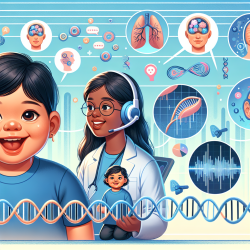In the realm of inclusive education, the number of students with Speech, Language, and Communication Needs (SLCN) has increased globally. Effective communication between teachers and these students is paramount to their success in regular classrooms. Recent research from the Canadian Journal of Speech-Language Pathology and Audiology / Revue canadienne dorthophonie et daudiologie sheds light on how to enhance teacher-student communication for students with SLCN through data-driven strategies.
The study, conducted in Sri Lanka, focused on primary grade teachers and their communication strategies with students with SLCN. Using an action research approach, the study revealed significant findings that can be instrumental for practitioners aiming to improve their skills and outcomes for children with SLCN.
Key Findings
- Effective Communication Strategies: The research identified several inclusionary communication strategies that teachers can adopt, such as giving single directions, praising student attempts to communicate, maintaining eye contact, assigning a communication buddy, rephrasing instructions, and giving specific feedback.
- Challenges and Barriers: The study also highlighted challenges, such as teachers' lack of knowledge regarding SLCN and the need for continuous professional development to support inclusive practices.
- Teacher Training: Implementing structured teacher training programs significantly improved teachers' communication practices, making them more inclusive and supportive of students with SLCN.
Implications for Practitioners
For speech-language pathologists and educators, the study underscores the importance of targeted professional development and continuous support. By adopting the identified strategies and addressing the highlighted challenges, practitioners can enhance their communication with students with SLCN, leading to better educational outcomes.
Furthermore, the study's action research approach serves as a model for practitioners to engage in reflective practice, continuously assessing and improving their strategies based on data-driven insights.
Conclusion
Enhancing teacher-student communication for students with SLCN is critical for their inclusion and success in regular classrooms. By adopting effective communication strategies and engaging in continuous professional development, educators can create a more inclusive and supportive learning environment. The findings from the research provide valuable insights and practical strategies that can be implemented to achieve these goals.
To read the original research paper, please follow this link: Canadian Journal of Speech-Language Pathology and Audiology / Revue canadienne dorthophonie et daudiologie.










